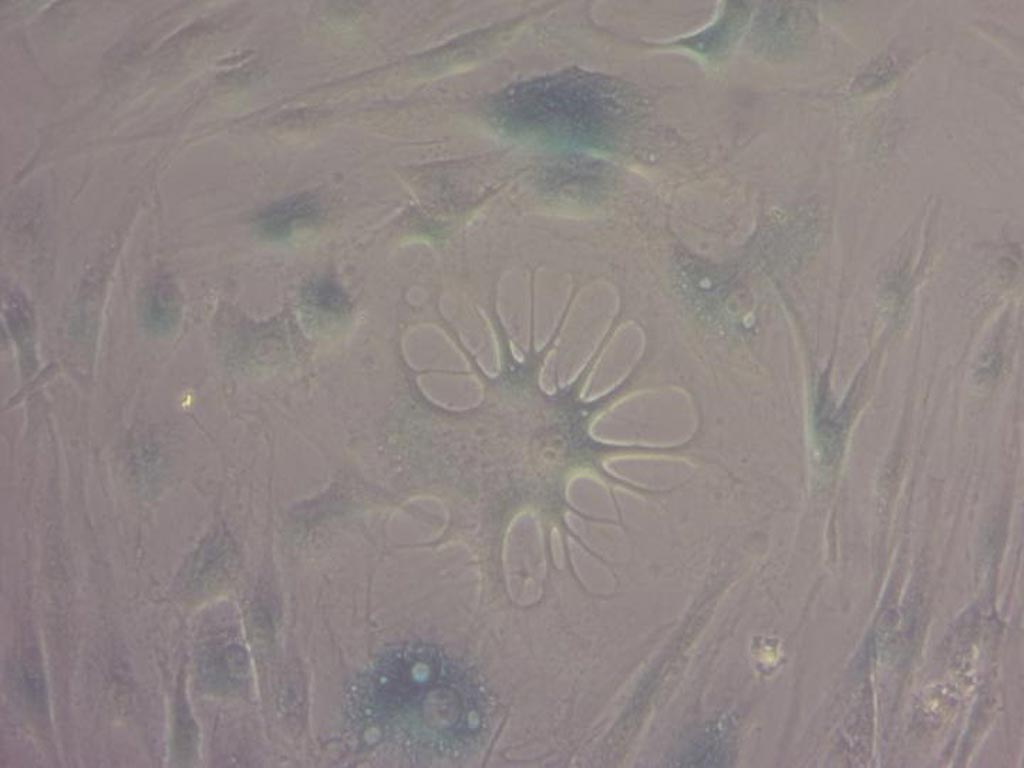Researchers Identify Two Proteins Required to Reverse Senescence
By LabMedica International staff writers
Posted on 21 Aug 2018
Two protein-splicing factors have been identified that enable mitochondria-targeted hydrogen sulfide to reverse senescence in endothelial cells.Posted on 21 Aug 2018
Senescent cells are aged or damaged cells that no longer are able to perform their normal roles. These cells interfere with the functioning of the tissue in which they accumulate, and eliminating them is considered to be a promising therapeutic approach. Hydrogen sulfide (H2S) has been found to alleviate senescence, but the pathways by which it accomplishes this are unclear.

Image: A micrograph showing cellular senescence in human cells (Photo courtesy of Eva Latorre, University of Exeter).
To study these pathways, investigators at the University of Exeter (United Kingdom) assessed the effect of the H2S donor Na-GYY4137, and since mitochondria are a source and a target of H2S, three novel H2S donors, AP39, AP123, and RT01 previously demonstrated to be targeted specifically to the mitochondria, on splicing regulatory factor expression and cell senescence phenotypes in senescent primary human endothelial cells.
The investigators reported in the July 19, 2018, online edition of the journal Aging that H2S donors targeted to the mitochondria reversed senescence, but each demonstrated a very specific upregulation of transcripts encoding the splicing activator protein SRSF2 (Splicing factor, arginine/serine-rich 2) and the splicing inhibitor protein HNRNPD (Heterogeneous nuclear ribonucleoprotein D0). Abolition of either SRSF2 or HNRNPD expression in primary endothelial cells in the absence of any other treatment resulted in increased levels of cellular senescence. None of the H2S donors were able to reduce senescent cell load in cells in which SRSF2 or HNRNPD expression had been abrogated.
These results indicated that mitochondria-targeted H2S was capable of rescuing senescence phenotypes in endothelial cells through mechanisms that specifically involved SRSF2 and HNRNPD.
"As human bodies age, they accumulate old (senescent) cells that do not function as well as younger cells," said senior author Dr. Lorna Harries, associate professor of molecular genetics at the University of Exeter. "This is not just an effect of ageing – it is a reason why we age. We used to think age-related diseases like cancer, dementia, and diabetes each had a unique cause, but they actually track back to one or two common mechanisms. This research focuses on one of these mechanisms, and the findings with our compounds have potentially opened up the way for new therapeutic approaches in the future."
Related Links:
University of Exeter













